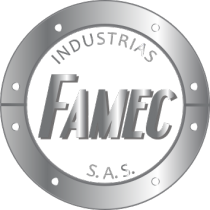Pratt Miller Large Area Autonomous Disinfecting Vehicle Deployed at Detroit Metropolitan Wayne County Airport McNamara Terminal
DETROIT, Sept. 19, 2020 /PRNewswire-PRWeb/ -- In the early months of 2020, the world became victim to the rapidly spreading COVID-19 virus, causing a pandemic of epic proportions, as well as unprecedented shutdowns and public health mandates. One industry that was hard hit was air travel as it slowed to nearly a standstill as airlines and airport facilities scrambled to build proper protocols for safe travel. The adverse health situation provided opportunities for manufacturers and engineering firms to step up and create solutions to combat the disruptive virus pandemic. This type of mobilization and shift in core business has not been seen since the United States entered World War II.
One of the companies on the forefront of creating innovative solutions for safety is Pratt Miller Mobility, a division of Pratt Miller, which is a leading-edge, full-service product development company with roots in championship-winning, professional motorsport programs and a company built on defense, mobility, and innovative industries. Its latest creation is the Large Area Autonomous Disinfecting Vehicle, or LAAD-V for short. The autonomous vehicle is a tool designed to disinfect large areas and Pratt Miller is providing a fleet of LAAD-V robots to keep the McNamara Terminal clean at Detroit Metropolitan Wayne County Airport (DTW).
The McNamara Terminal at Detroit Metropolitan Wayne County Airport serves as a major hub, providing liftoff to hundreds of national and international locations. The safety of travelers and airline staff is paramount as the industry begins its recovery and the frequency of air travel ramps up dramatically. The LAAD-V is a highly capable autonomous robot that is effective in deploying disinfectant and serves as a beacon of ingenuity in safety for this fight against COVID-19.
The LAAD-V is very unique due to several reasons; most notable is its multi-head electrostatic sprayer that is capable of operating in a large area with complete surface coverage. The spray pattern ensures the surface is completely wrapped in disinfectant, which is an FDA-approved disinfectant that adheres to surfaces, creating exceptional protection from the virus. Electrostatic sprayers offer an advantage over other disinfectant techniques such as fogging and UV-C light. Fogging requires employees to wear respirators and the section be blocked off from the public. The UV-C light technique only offers line-of-sight coverage. The electrostatic sprayers completely wrap the target surface for complete protection. The LAAD-V has a large disinfectant tank, allowing the machine to operate for long periods of time between refills. The vehicle is fully electric and the rechargeable battery powers it for complete daily coverage.
Another LAAD-V specific feature is its sensor and data analytics capabilities, which provides digital reports of its disinfecting progress. The LAAD-V provides real-time coverage information via a web app showing the completed percentage of the target area and if there was a section that couldn't be properly disinfected. This ensures a guarantee of coverage for the facility management and customers. For example, if a portion of the operating area is blocked due to misplaced equipment or a person occupying the space, the size and location of the failed cleansing is noted on the report so the staff can respond accordingly. The sensors and tracking capabilities allow for the vehicle to have a safe route and avoid bumping into obstacles. This mobility and safety technology allows the LAAD-V to operate without shutting down the facility. The data feedback is also beneficial for facility management to create a business case value for the LAAD-V.
Bringing innovation to mobility during COVID-19 isn't something one company can shoulder by themselves; it takes unique partnerships to bring the projects to reality. The LAAD-V capabilities were proven during a media day held at the Gerald R. Ford International Airport in Grand Rapids, Michigan in late summer. The event took place thanks to collaboration between Pratt Miller, the Michigan Economic Development Corporation (MEDC), and Planet M. The LAAD-V is now one of the key components to the "Fly Safe. Fly Ford" campaign taking place at the Gerald R. Ford International Airport, ensuring the safety of the passengers and staff. And that relationship with MEDC and Planet M is the contributing factor that has placed a LAAD-V fleet in the McNamara Terminal at Detroit Metropolitan Wayne County Airport.
"We are very thankful and always thrilled to work with MEDC and Planet M. We were in contact with each group early in the process when they redirected some funding from current projects to this COVID-19 solutions funding. Through working with both of them we were able to target pilot locations before landing on the innovation team at the Gerald R. Ford International Airport and at the McNamara Terminal in the Detroit Metropolitan Wayne County Airport," said Christopher Andrews, director of Mobility and Innovation at Pratt Miller Mobility.
The deployment of the LAAD-V is the first of its kind in the United States for a connected, electric and autonomous robot used for disinfecting protocols. Protecting travelers and airline staff doesn't stop at the Detroit international airport; Pratt Miller Mobility is working on more LAAD-V placements at other airports and large facilities.
Simon Dean, Pratt Miller's Vice President of Mobility and Innovation properly summed it up, "At Pratt Miller we provide solutions to complex mobility problems. The LAAD-V helps keep travelers and the airport employees safe as the airline industry continues to expand its services following the slowdown."
For more information on LAAD-V, please visit http://www.prattmiller.com/LAAD or contact Christopher Andrews, Director of Mobility & Innovation at Pratt & Miller - candrews@prattmiller.com
SOURCE Pratt Miller





